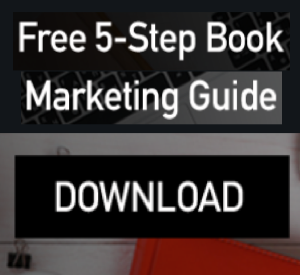It seems like the subject of AI-powered content dominates the news lately, especially when it comes to its usage in more traditionally creative fields like writing and art. While this technology isn’t exactly new, the programs released largely throughout 2022 seem to have elevated the platform and thrust the debate onto the main stage of public discourse. From Midjourney and DALL•E 2 to Stable Diffusion and Deep Dream Generator, the list of AI-generated art tools continues to grow.
But there are many in the arts community who are uncomfortable or downright incensed about the use of these platforms as substitutes for human-created art—especially when it comes to things like children’s books.
The debate largely exploded with the publication of Ammaar Reshi’s children’s book Alice and Sparkle in December 2022. The author, who used tools like ChatGPT and Midjourney to create the book’s content, admitted it took him one weekend to get the twelve-page book together, printed, and listed on Amazon.
While traditionally published children’s books go through multiple rounds of edits for both the text and the illustrations, obviously this type of AI-generated book skipped all those steps. As a result, many readers quickly pointed out the somewhat obvious flaws that remained evident after the book’s publication, including objects that appeared to be floating in midair and Alice’s fingers that sometimes appeared more clawlike than humanlike. But the book largely looks like any other children’s book.
And that’s exactly the problem that many people have with it. If anyone can become a children’s book illustrator simply by punching a few prompts into the computer, what will happen to those who actually create pictures with their own hands?
To fully understand the debate, it’s important to understand how AI platforms are able to generate these pictures in the first place. Tools like DALL•E 2 and Midjourney take samples of millions of different images from the internet. Their algorithms then begin to detect patterns between those images and generate “new” ones in a similar style based on the original prototypes and the prompts that the user enters.
But where exactly do the tools get these sample images on the internet? From other artists—a vast majority of whom have not given permission for their original artwork to be used in order to provide fodder for these algorithms. Any artist who uploads their work on the internet—whether they’re putting it up for sale or offering style examples for commissioned pieces—can unwittingly provide free samples to the AI apps who will then take these artists’ work and regurgitate it into a slightly different form for other people to use . . . for free.
Many creatives see the whole process as a serious form of plagiarism since none of the artists “teaching” the AI apps are ever compensated for their work. Not only that, but some companies have already started using AI-generated art in things like campaign ads instead of hiring artists.
So to add insult to injury, not only is illustrators’ work being used without their permission to create the art produced by their computer competitor, but now they find themselves being replaced by said competitor. As children’s book illustrator Adriane Tsai tweeted on December 12, 2022: “I had to say this one too many times: Art created from stolen art, even if it looks “new” now, was still created from *gasp* stolen art! If AI was never trained on stolen work, you would not be able to make your ‘new’ art. That’s the end of the story.”
While some people argue that using AI to generate illustrations is no different than using other tools that manipulate digital images, it’s hard to compare the two. Take something like Photoshop, for instance: while technically anyone can do it, it still takes time and practice to do it well (as we can see from the countless “Photoshop Fails” listicles that make up a good portion of websites like BuzzFeed and Reddit). Compare that to something like the AI-powered Midjourney: all it requires to spit out increasingly complicated works of art is for the user to enter a few words into a text box. Yes, that does require some amount of human creativity but . . . not much.
So what can be done to protect illustrators from an influx of mass-produced “art” that is based on work that actual artists have created? Unfortunately, the answer right now is: not a whole lot. Some people have floated the idea of setting up an open training data set that artists can actively opt into to give permission for their work to be used for AI-app training purposes. This idea could certainly work, but the issue is getting companies to agree (or be legally forced) to make that effort.
Even then, it doesn’t answer the question of illustrator compensation. Would artists be compensated, however minimally, for the use of their artwork for these training purposes? What about when people enter specific artists’ names into the platform, thus generating results that mimic a certain style? Would those artists receive more compensation? And what happens when companies use a conglomeration of artists’ work for purposes such as ad campaigns or other commercial projects?
There is clearly not a single right answer to these issues, but one thing has become crystal clear: as AI-generated art becomes more popular, the need for some system of regulation and compensation will only become more urgent. Technology has taken a giant leap forward in the creative community, and it must now hurry to catch up in order to protect the integrity and hard work of artists and illustrators around the world.
Now as to whether or not you consider the pictures that these AI-generated platforms produce to be actual art, well . . . that’s a discussion for another day.
Andrea Moran lives outside of Nashville with her husband and two kids. She’s a professional copywriter and editor who loves all things books. Find her on LinkedIn.





